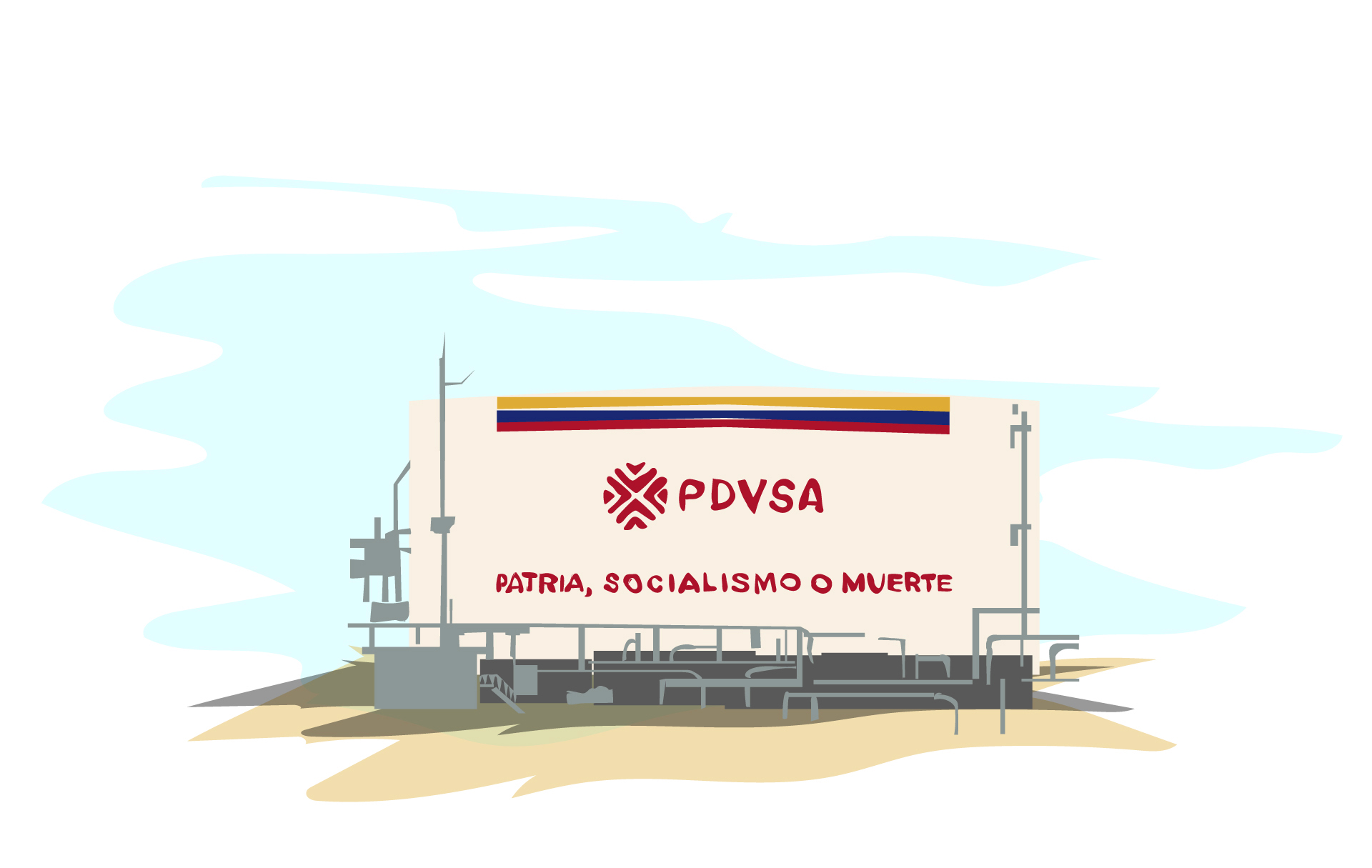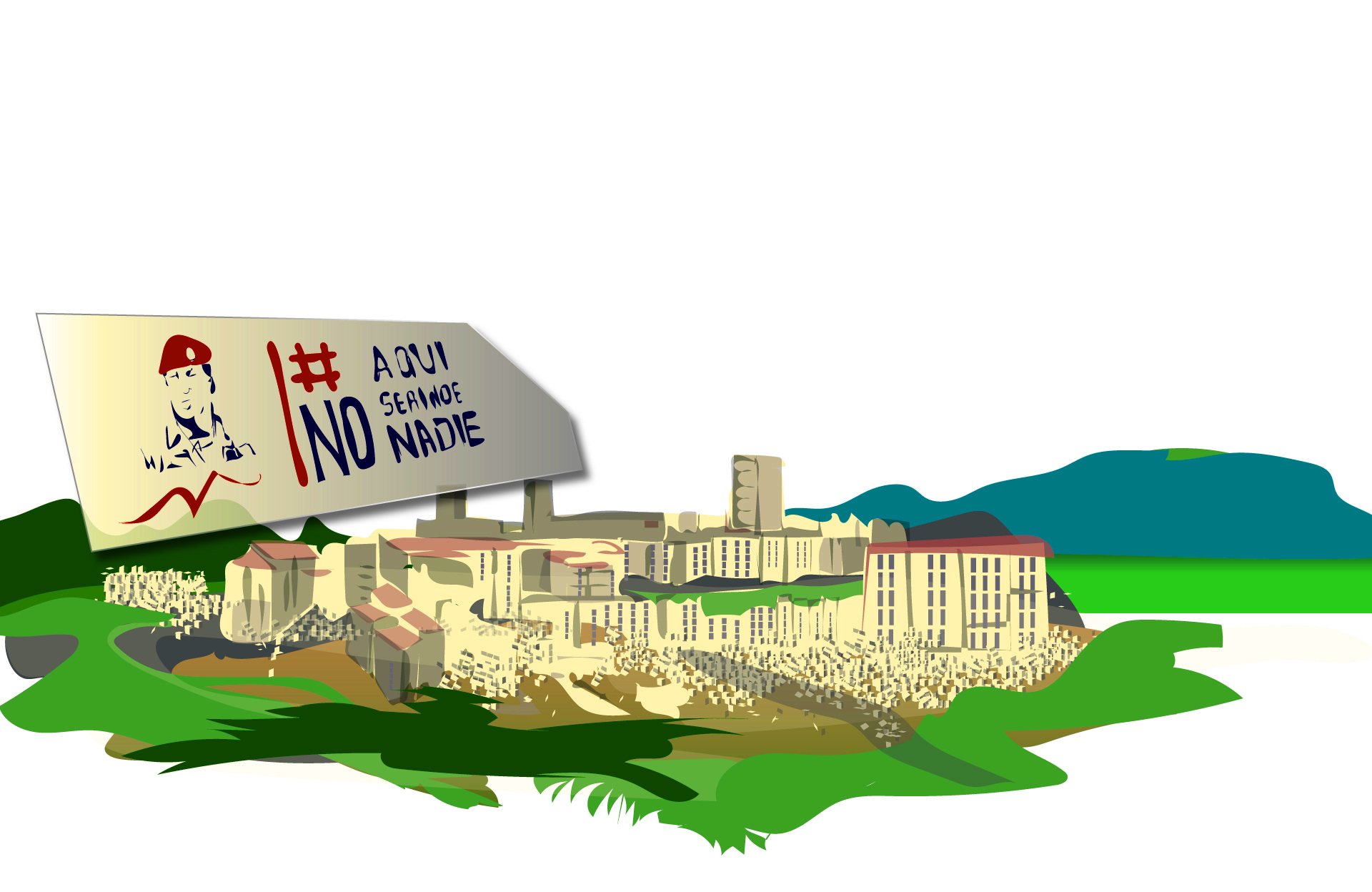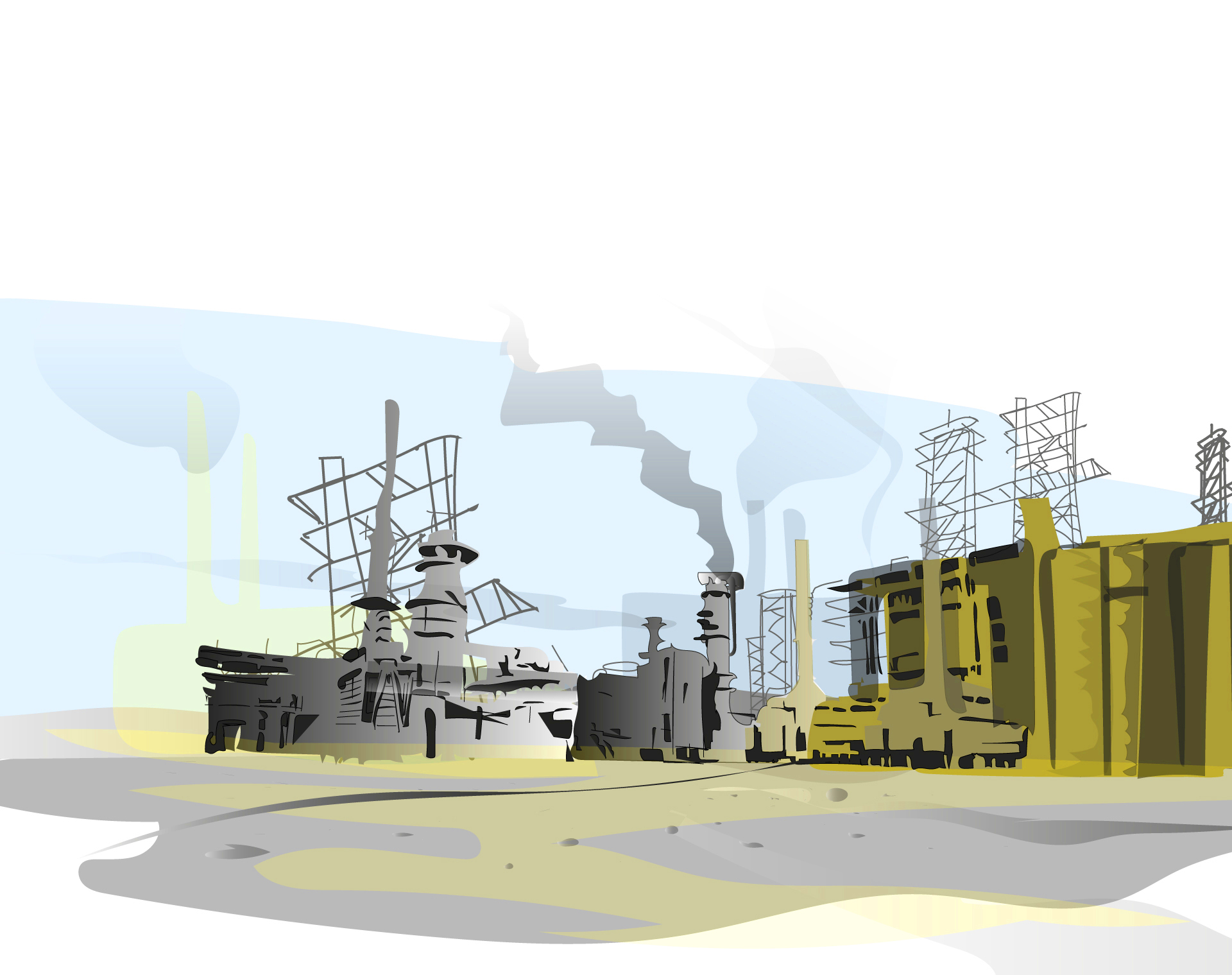Interview with Arnoldo Pirela, conducted by Fabrice Andréani
In your opinion, what are the most salient features of the current socio-economic crisis in Venezuela?
Venezuela is plagued by an unprecedented, multifaceted crisis, marked by historic levels of poverty and extreme poverty (95% and 80% of the population, respectively) and alarming rates of undernutrition as well as child and maternal mortality. In 2016, several NGOs and international experts had already labeled the situation a “complex humanitarian emergency”. The country’s GDP has dropped by 90% since 2014, with sustained hyperinflation and near-total destruction of production capacity – including that of the oil industry, which until then had generated most of the country’s currency –, as well as of basic infrastructure and services such as water, power, gas, transportation and even gasoline. Public healthcare depends almost exclusively on international humanitarian aid, and when even that is not enough, patients must purchase medication and equipment themselves. In less than six years, more than five million people have fled the country, often under extremely precarious circumstances.
For those who remain, the legal minimum wage amounts to a few dollars per month. The vast majority of workers are paid less than $10 per month, with company executives earning just over $50; meanwhile, average monthly food cost for a household is estimated at nearly $500. Even if they receive foreign currency from relatives now living in another country, a growing number of Venezuelans have been forced to enter the informal or even underground economy, though 60% of the active population was already working in the informal sector in 2014..
Venezuelan society is increasingly dominated by those best “connected” (enchufados) to high-ranking public officials or to senior military commanders, who control commodity exports and imports of staple products. These prominent civilian and military figures equally capture and extort the revenue generated by illicit or even criminal activities, including currency and gasoline smuggling, drug-trafficking, and the gold mining business in the Venezuelan Amazon and Guyana regions – an activity that also contaminates the country’s main freshwater and biodiversity reserves.
The Hugo Chávez years coincided with an unprecedented oil boom, before prices plunged shortly after Nicolás Maduro’s election. What is the role of oil in the current crisis?
Oil and price fluctuations are not responsible for this crisis, nor for previous ones. Certainly, when leaders mismanage the revenue generated by oil booms, it is often the most vulnerable segments of the population that pay for the fall in prices and growing debt. However, Venezuela does not suffer from the “oil-rentier model” or the “resource curse” so much as it is plagued by its elites’ attitudes towards oil, called “the Devil’s excrement” by diplomat Juan Pablo Pérez Alfonzo, the founder of the Organization of Petroleum Exporting Countries (OPEC, 1960). Throughout the 20th century, Venezuelan elites exhibited a mindset typical of 19th century landowners. To cite the long-known phrase popularized by writer Arturo Uslar Pietri’s, the idea was always to “sow” oil revenues within less technical sectors, or even to replace them with other activities – especially agriculture, although the amount of land considered arable under optimal conditions makes up just over 2% of the country’s surface area.
The amount of funds squandered – or embezzled from government coffers – during the Chávez years can be attributed to the exacerbation of that landowning economic culture as part of a “revolution” project that happened to be rather vague and ever-changing, but nonetheless constantly calling for a “radical” transformation of the nation’s political, economic and social life, together with regional geopolitics. This ambition was often invoked to justify the circumvention of public finance oversight mechanisms, especially parliamentary ones, which had been painstakingly put in place over the previous four decades of democracy.
The comparison of Chávez’s achievements with those of his predecessors is very telling. Between 1917, when it was first created, and 1972, the Venezuelan oil industry generated an average of $2.69 per exported barrel. Thanks to this revenue, Venezuela was no longer the poorest country in the region by the 1930s, although no actual development strategy had been put in place. The country quickly became urbanized; a network of roads was built, along with modern public education and healthcare systems. By the end of the 1960s, nearly 40% of the population belonged to the middle class.
The global energy crisis of 1973-74 triggered an unprecedented boom that peaked in 1981, with an average barrel price of $29.71. Some investments made after the 1976 nationalization of the Petróleos de Venezuela SA (PDVSA) oil company turned out to be unwise (especially in the automobile industry, at a time when the sector was being restructured in the rest of the world), but others allowed the country to strengthen its public infrastructure and services, including healthcare, education, sanitation, electricity, gas, communications, and transportation. The country became the wealthiest in Latin America and was commonly called “Saudi Venezuela”. Its GDP per capita was higher than that of France, and the Concorde flew regularly between Paris and Caracas. The decline in crude oil prices over the next two decades weakened Venezuela’s quasi-welfare state, but never to the levels to which the country has now fallen.
“The post-2014 oil crash only accelerated a long-term process of disintegration”
Under the Chávez governments, the average price per barrel between 1999 and 2012 was $56.2. Yet in spite of the president’s near-daily announcements and unveilings on television, no significant public project had been achieved at the time of his death in 2013. The country’s landscape is littered with the vestiges of a long series of unfinished construction works: highway overpasses, railroad lines, incongruous Chinese electronic equipment factories and Russian weapons plants, and even power plants, which are now sorely lacking in the country.
Ironically, it is thanks to two programs created in the 1970s by social-democratic President Carlos Andrés Pérez – a longtime enemy of the “Bolivarian Revolution” –[mfn]Andrés Pérez was the target of the failed putsch attempt which made Chávez famous in 1992. He had returned to power in 1989, promising a restoration of the 1970s “Great Venezuela”, only to adopt austerity measures that led to the harshly-repressed Caracazo protests.[/mfn] that the country has maintained its international presence: on the one hand, the study-abroad scholarships awarded by the Foundation Gran Mariscal de Ayacucho, which enabled professionals to pursue careers in the American and European labor markets; and on the other, the National System of Children and Youth Orchestras and Choirs of Venezuela, a renowned model of classical music teaching for the working class that has produced masterpieces celebrated all over the world.
As a matter of fact, the post-2014 oil crash only accelerated a long-term process of disintegration, the symptoms of which had first appeared much earlier.
Chávez regularly claimed that Venezuela had the largest petroleum reserves in the world, but now the country has almost stopped producing oil: as far as disintegration goes, it seems that Venezuelan leaders have destroyed the proverbial goose that laid the golden eggs, the PDVSA oil company. How did that happen?
Within the large coalition elected in 1998, which included nationalist military officers and civilians from a variety of backgrounds ranging from center-right to radical left, “control of the oil tap” was deemed the absolute priority, as if it granted access to unlimited power. For some officials, this would enable the Bolivarian Revolution to “succeed where Cuba [had] failed.” Although PDVSA was legally state-owned, it had gained a certain degree of autonomy and become one of the most competitive oil companies in the world – so much so that the left called it “a state within the state”. Chávez paid little regard to usual procedures for the appointment and promotion of executives and constantly equated “meritocracy” with “oligarchy”, putting PDVSA at the center of an acute political crisis in 2002-2003, with a failed coup attempt against Chávez and a three-month oil strike. Chávez then dismissed 20,000 strikers, and the company never recovered.

PDVSA was then harnessed to advance “21st-century socialism”, which remained largely undefined while propagating a culture of indiscriminate subsidies for a broad range of goods and services. Besides food and medication, these subsidies also included currency and gasoline, regardless of the buyer’s income. This system led to regular shortages, a drop in national productivity, and the proliferation of black markets. Exchange controls were introduced in 2003, in theory to prevent capital flight. PDVSA then basically had to sell its foreign currencies to the state at half-price (compared to international exchange rates). The state’s unchecked allocations of these currencies had the opposite effect to that intended.
In addition, Chávez launched a series of nationalizations (petroleum joint ventures, telecommunications, electricity, steel, retail, agro-industry, etc.) beginning in 2007. As a consequence, the main national asset, PDVSA, had to perform three functions at the same time: it became the parent company for a large number of subsidiaries in sectors that were sometimes very remote (e.g., food sales); but it was also a lender of last resort, as well as guarantor for loans taken out by the state from international partners. In fact, while other state-owned companies were floundering, PDVSA was involved in everything but oil.
At the same time, the government appropriated the surplus reserves of the Central Bank, which were intended to be used in the event of an oil crash, siphoning off approximately $7 billion between 2004 and 2006. Worse still, from 2007 onwards, the government also committed to reimbursing the loans granted by China via future oil sales, the value of which has now exceeded $50 billion (approximately one third of the current public debt).
In the end, along with nationwide power outages and rationing of running water, explosions in refineries and pipelines due to lack of maintenance became more frequent as early as the end of the 2000s. It is therefore hardly surprising that after remaining stable throughout the Chávez years at under three million barrels per day, the production of crude oil fell by almost two-thirds between 2014 and 2019, even before the first oil sanctions imposed by Donald Trump’s administration.
Despite its socialist rhetoric, the Chávez years were marked by high porosity between the private and public sectors. Maduro tried for a time to preserve Chávez’s “legacy”, before taking what many Chavistas and leftists call a “neoliberal” turn. He has now liberalized the exchange rate and even broached the possibility of privatizing public companies. How should we interpret this turnaround?
Hugo Chávez did not invent Venezuelan “hyper-presidentialism” or clientelism, but he did bring them to new heights by involving the very heart of the state: the military. He also established a party-as-State, operating in parallel with existing institutions and exempt from all parliamentary or judicial control. In fact, all major public budgets and other ad-hoc funds were managed at Chávez’ discretion, with the help of his Minister of Economy and Planning, Jorge Giordani. The system was especially vulnerable to corruption because the main principle of human resources management was “loyalty”, which encouraged the approval of “projects” improvised by any local or foreign “tricksters” (vividores) scheming to obtain the lion’s share of profit in sectors where the government had decided to invest. Chávez even went so far as to give his former bodyguard control of the public treasury… before replacing him with his personal nurse.
In addition to the PDVSA behemoth and its many subsidiaries, all state-owned companies and public-private partnerships were thus used as dedicated channels to drain public funds for the benefit of the PSUV (United Socialist Party of Venezuela) leaders in power as well as their business partners. Among the many corruption schemes linked to clientelism within the government, the so-called “boli-bourgeoisie” (boliburguesía), the “Bolivarian bourgeoisie” that emerged under Chávez accumulated vast amounts of money by taking advantage of exchange controls, through the speculative capture of petrodollars allocated to companies with preferential rates: the currency was purchased from the state at an artificially low rate and then sold on the black market with margins of over 100%.[mfn]According to a group of Chavista economists (including former ministers), more than half of the one trillion petrodollars captured by the state between 2002 and 2013 were embezzled using that channel.[/mfn]
Some even managed to use social programs to earn hefty profits in a short period of time. For instance, in March 1999, when servicemen were deployed to work in healthcare or on roadwork projects in the lower-income barrios [districts], tens of millions of dollars in cash “disappeared.” Then there is the example of the “social production companies” (EPS in Spanish), a designation which refers to the legal status imposed on PDVSA subcontractors beginning in 2006.[mfn]The legal status was created following the failure of the “cooperatives” funded by public loans, most of which were never reimbursed.[/mfn] These companies had a multiplying effect on corruption: in addition to systematic kickbacks, the EPS were required by law to contribute to PDVSA’s new “social fund”, whose managers in turn used the services of the same “social production companies”.
To be sure, the healthcare, food and education “missions” launched in 2003 with Cuba’s support (shortly before a referendum that could have led to Chávez’s removal) did contribute to the initial reduction in poverty at the height of the oil boom. But they were never embedded in the relevant ministries, and the Cuban state charged a high price for the work of its doctors and trainers while making substantial profits on the salary they effectively perceived.

In 2011-2012, Chávez’s last presidential race – during which he was terminally ill – marked a point of no return for public coffers, especially after the launch of the Great Housing Mission. The program involved the mass construction of free, fully-equipped homes, using the services of companies based in countries governed by the regime’s allies. Existing urban-planning standards were utterly disregarded when it came to calls for tenders, maps, materials, transportation, waste, etc. In the end, the homes were up to 50% more expensive than those in the rest of the region, while their durability left much to be desired. When Giordani resigned from the government in 2014, he wrote an open letter accusing Maduro of not having rebalanced public accounts in a timely manner, and in the same document recalled that the debts generated by the Great Housing Mission were as “vital” for electoral reasons as they were “excessive” from a financial perspective.
It was not until late 2018 to mid-2019 that Maduro resigned himself to legalizing and extending the grip of “lawless capitalism”, after suffering successive cycles of social protests and sanctions imposed by the Trump administration.[mfn]The Trump administration restricted the refinancing of the debt in dollars in late 2017, the export of oil to the United States in 2019-2020, and the import of American gasoline and diesel in 2020.[/mfn] Maduro liberalized the exchange rate and prices, and even celebrated on television the de facto dollarization of the economy. These decisions led to a proliferation of stores selling secondary products and luxury goods to an ultra-privileged minority of customers, but there is little doubt that a large share of the capital that was invested or repatriated in the process could no longer be kept in Europe or the United States due to actual or alleged ties between its owners and the ruling class.
In the end, as the government was running out of oil revenue, it began selling to countries such as Turkey, Qatar or Iran shares of gold extracted in the Orinoco Mining Arc[mfn]The Orinoco Mining Arc is a huge mining area comprising 12% of the territory, officially inaugurated in 2016 by a State of Exception Decree, and where a great quantity of precious minerals can be found (gold, bauxite, diamonds, cobalt, coltan…).[/mfn] under the supervision of various armed groups, including the Colombian ELN and FARC dissident factions. Finally, navigating the byways of global geopolitics, Maduro managed to get an “Anti-Blockade Law” passed by decree. The text plans for the massive and unconstitutional privatization of the oil industry as well as of the entire productive apparatus controlled by the state. The potential buyers of those extremely risky, hyper-devalued assets, as well as the price they would pay, the sums they plan to invest to reactivate production – especially oil production – and their strategy for recouping this investment all remain unknown. Possible scenarios include high-risk investments, and/or a large-scale money-laundering operation within the state or hidden by the state, led by Maduro’s proxies in the military high-command or in the elite ranks of the Bolivarian hierarchy.
Further readings:
- Arnoldo Pirela. “Siete claves para comprender a Venezuela y un vistazo al futuro: mitos y avatares de la economía”. Cuadernos del CENDES [online], n°100/36, 2019.
- Arnoldo Pirela. Geopolítica petrolera y autoritarismo en América Latina y el Caribe: el caso de Venezuela”. Caravelle [online], n°115, 2020.

